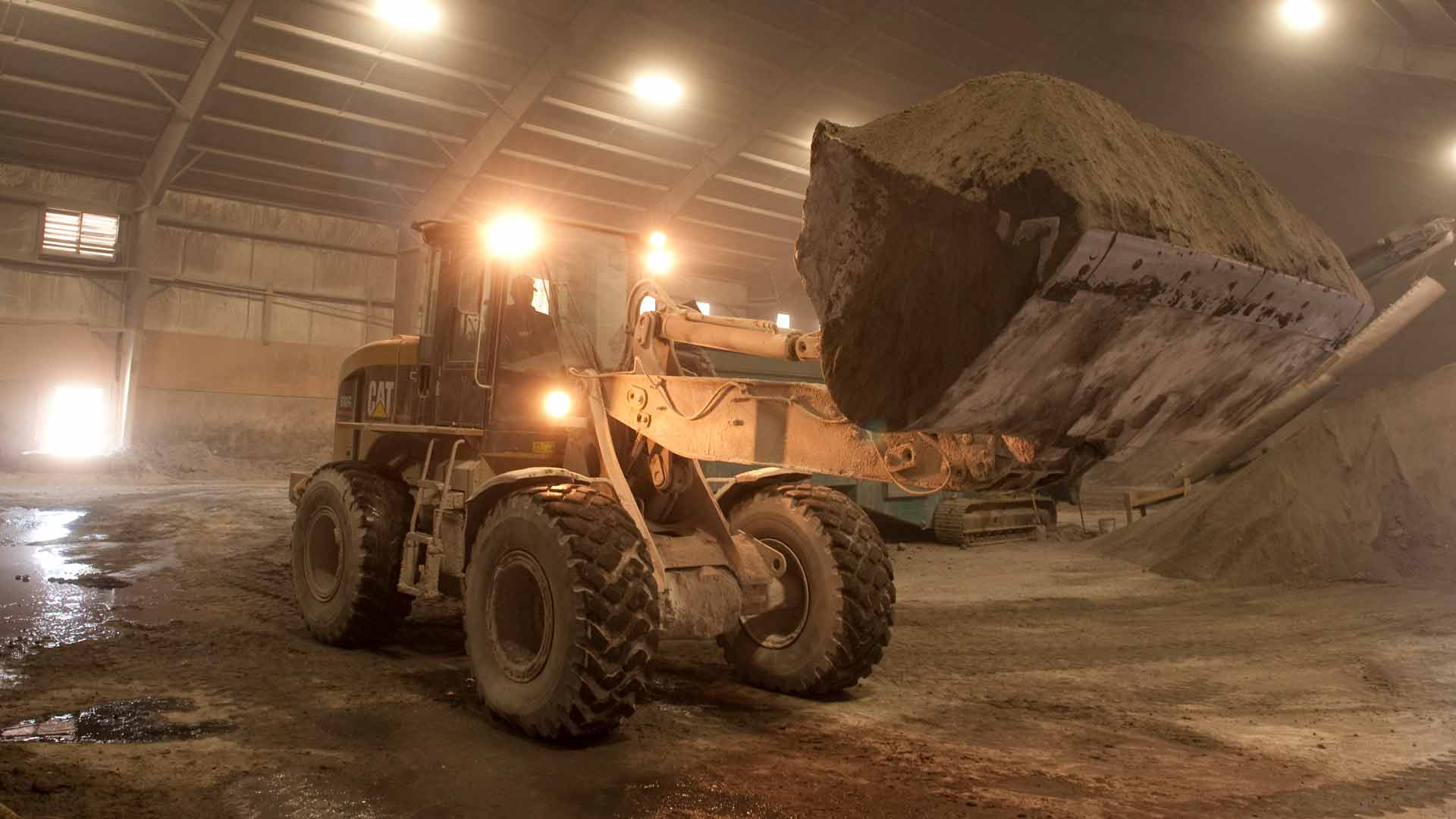Benson, Minn. — The phosphate, potash and sulfur in NAFmicro fertilizer aren’t mined overseas — they’re Minnesota grown.
North American Fertilizer LLC sells 110,000 tons a year of ash fertilizer derived from incinerated poultry manure. The ashes come from Fibrominn in Benson, Minn., a 55-megawatt electricity plant fired by a half-million tons of turkey and chicken litter. The leftover ash is a good source of essential crop nutrients.
The $5 million NAF facility was built in 2007 by a group of Minnesota farmers and entrepreneurs. AURI helped the group test ash fertilizer in University of Minnesota field trials. AURI was also involved in early planning and feasibility studies for Fibrominn.
At a time when U.S. fertilizer imports are on the rise, NAFmicro represents more than $10 million in retail sales of locally-grown, renewable fertilizer.
NAFmicro has been a hit with farmers, says Steve Miller, NAF general manager. “Everything we get from Fibrominn, we’ve sold. And demand exceeds our supply.”
Creating opportunity
Minnesota’s biomass energy industry is just getting started, says Al Doering, director of AURI’s coproducts lab in Waseca. As this new energy sector develops, large quantities of biomass ashes will become available, he says, opening the door for new uses and enterprises. “NAF is a perfect example. They are building a new business around this renewable product. This is what economic development and job creation are all about.”
NAF employs five full-time workers and three seasonal workers, and also contracts for trucking services to ship fertilizer between its warehouses in Benson and Olivia. The company is just finishing up a $1.8 million expansion, which will increase its fertilizer storage capacity to 100,000 tons. The additional warehouse space is needed to accommodate an increasing volume of ashes from Fibrominn, Miller says.
Nutrient-rich ash
One hundred truckloads of poultry litter roll into the Fibrominn power plant daily. The mixture of turkey and chicken manure, bedding materials and other biomass is burned in a custom boiler to generate high-pressure steam. The steam drives a turbine, generating renewable electricity for Xcel Energy.
A 500-foot-long overhead conveyor transfers warm ashes from Fibrominn directly to the NAF fertilizer plant next door. There, the ashes — which look like fine, gray sand — are screened, sprayed with water for better handling, and stored in cavernous warehouses.
The nitrogen in the poultry manure is consumed during combustion, Miller explains, but the minerals in the manure remain. In addition to phosphorus and potassium — primary crop nutrients — the ashes contain other important nutrients, including sulfur, zinc, copper, magnesium and boron.
Unlike commercial fertilizers, “NAFmicro fertilizer is not a blend,” Miller says. Every particle contains primary, secondary and micro nutrients, which eliminates the need for mixing and allows more uniform application, he says. “We call it ‘fertilizer for dummies.’ Everything you need is
in there.”
This past fall, more than 75,000 tons of NAFmicro fertilizer were spread on central Minnesota farm fields to feed next season’s corn, soybeans, alfalfa, wheat and sugar beets. Another 30,000 to 40,000 tons will be applied in the spring. In total, roughly 150,000 acres of central Minnesota cropland will benefit from NAF’s renewable fertilizer, Miller says.
NAFmicro is distributed by nine farm-supply retailers in Minnesota, Iowa and South Dakota. The retailers pick up the ash from the warehouse and deliver it directly to fields, where it is applied with GPS-guided spinner spreader rigs and later incorporated into the soil
through cultivation.
Because NAFmicro has a low nutrient density, the application rate is quite high — about 1,300 pounds per acre, compared to around 300 pounds per acre for a conventional dry-fertilizer blend. Although that raises transportation and application costs, it also means you get dense, uniform coverage, Miller says. “Fertilizer particles are spaced very close together, so crop root systems can easily come into contact with it.”
Currently, NAF prices the fertilizer at a discount, compared to conventional P and K, Miller says. “The higher application and trucking costs are also factored into the wholesale price.” As farmers come to appreciate the advantages of NAFmicro, the ash fertilizer could command a premium, he says. NAF is also pursuing high-value specialty fertilizer markets, such as gardens and golf courses.
Grower acceptance good
Brad Aaseth is manager of Bird Island Soil Service Center in Bird Island, Minn., which sells about a third of NAF’s annual output. The 240-member grower cooperative also owns a stake in the fertilizer company.
“Demand for NAFmicro is very good,” Aaseth says. “It’s been a well-received product with lots of repeat customers. We committed our entire allocation by August. I had to turn down some requests.”
NAFmicro has no nitrogen to leach into surface waters when crops aren’t growing, so it can be safely applied in the fall — an advantage for many farmers, Aaseth says. Sugar beet producers, who must limit nitrogen to maintain sugar quality, also like the ash fertilizer, he says. Two years of research by Southern Minnesota Beet Sugar Cooperative confirmed that NAFmicro produced revenues comparable to a conventional fertilizer program. “We’ve applied quite a bit of it ahead of sugar beets this fall.”
As for performance, “we haven’t seen any disadvantages,” Aaseth says. “It performs about the same as commercial fertilizer. Long term, the sulfur and other micronutrients might be an advantage.”
